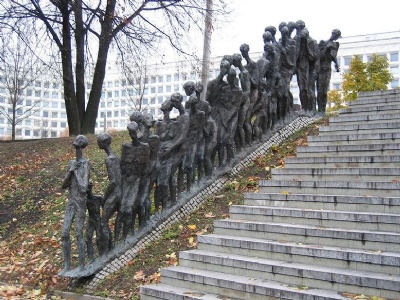Minsk Ghetto
The ghetto in Minsk was set up in July 1941 and held at most 90,000 Jews. Minsk ghetto was thus the largest ghetto set up by the Nazis on Soviet soil. In November 1941, german and czech Jews arrived in the ghetto. This was the main reason why Nazi killing squads started to carry out regular killings against the ghetto Jews to make room for new arrivals. It was mainly Jews from Hamburg who arrived in Minsk and therefore it was called ”Hamburg ghetto”. The murders led to the formation of a resistance movement in the ghetto. But instead of rebelling against the Germans inside the ghetto, the resistance movement organized opportunities for Jews to escape from the ghetto. Once they had fled, several of them joined partisan units operating in the forests around Minsk. Between 1941 and 1944, about 10,000 Jews fled the ghetto. The area around Minsk was thus directly dangerous for the Germans to move around in. In 1942, 30,000 Jews were deported from the ghetto by police and security forces. Most were murdered in Maly Trostenets east of Minsk. After that action only about 9,000 Jews remained in the ghetto. In October 1943, the ghetto was finally liquidated by the germans. The remaining 2,000 Jews were rounded-up and murdered in Maly Trostenets.
Current status: Monument (2007).
Location: 53°54'35.4"N 27°32'34.1"E
Get there: Bus from central Minsk.
Follow up in books: Arad, Yitzhak: Holocaust in the Soviet union (2009).


The monument (Yama memorial) is located right on the outskirts of the former ghetto where about 5,000 Jews were murdered in March 1942. The monument is a sculpture consisting of a group of people under dejected and tragic circumstances wander down into the pit where they are about to be murdered a few minutes later. To what extent there are any houses left in the former ghetto, I do not know.